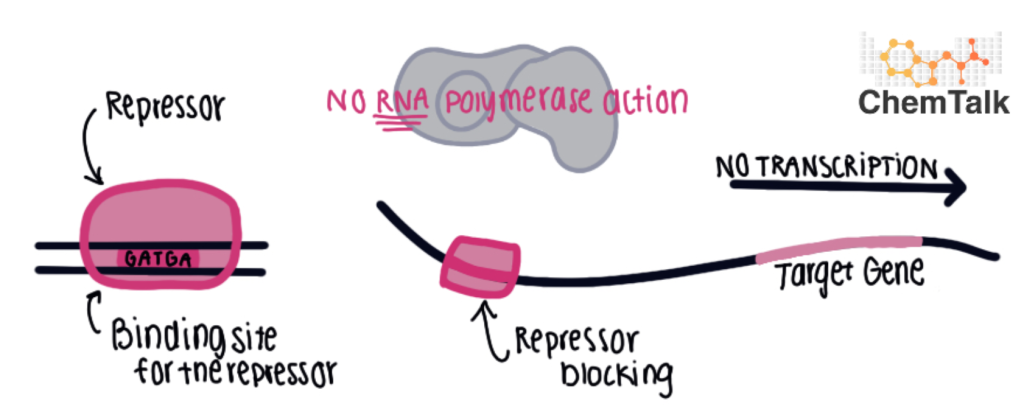Core Concepts: Transcription Factors
The role of transcription factors is to turn genes on and off. In this article you will be able to understand how transcription factors work and their importance during the process. After reading this article you will understand more specifically about the transcription process of the central dogma of biology.
Related Topics
> Central Dogma of Biology
> A Journey into Protein Synthesis: Transcription, Translation, and Beyond
> Gene Expression
What are Transcription Factors
In order for genes to be translated into a protein, the gene must first be transcribed to RNA. Transcription factors are proteins that control the process of converting a gene to a protein. The transcription factor essentially turns the gene on or off! These factors enable the body’s cells to express the proper genes at the appropriate times, undeniably amazing how the body works! You may see transcription factor abbreviated as TF in some texts.
Transcription is the process of copying the DNA sequence of a gene into an RNA molecule. Hence, it is a crucial step in creating a protein from genetic information is transcription. These process is the final part of the Central Dogma of Biology.
Firstly, to establish a solid foundation, it is crucial to comprehend that gene expression involves the process of turning on or utilizing a DNA gene to produce the specified protein. Note that not all genes in your body activate simultaneously, in the same cells, or in all sections of the body.
Transcription serves as the pivotal control point for many genes, determining their activation or deactivation. If a cell fails to transcribe a gene, it becomes incapable of utilizing it for protein synthesis. When a gene undergoes transcription, it is highly probable that it will be employed in protein production. Generally, the greater the extent of gene transcription, the higher the quantity of protein synthesized as a result.
A transcription factor typically binds DNA at a specific target sequence. Once they bind, the transcription factor alters how easy or difficult RNA polymerase finds it to bind to the gene’s promoter.
There are two main types of TFs, activators and repressors. Descriptions of these factors are discussed below.
Activators
Activator transcription factors increase the likelihood that a gene will undergo translation. For instance, an activator could facilitate the promoter-binding of RNA polymerase and general transcription factors, as seen in the figure below. You could think of this activator as turning the gene on from an off state to be transcribed.

The majority of activators are DNA-binding proteins that interact with promoter or enhancer-proximal components. An activator-binding site is the DNA site that the activator binds to. An activating region or activation domain is the area of the activator that interacts with the overall transcriptional machinery through protein-protein interactions.
Repressors
A different type of transcription factor is an inhibitor. This is a repressor transcription factor. For instance, a repressor could obstruct the ability of RNA polymerase or the basal transcription factors to bind to the promoter and initiate transcription. The figure bellow shows this.

The lacZYA operon, which contains genes encoding proteins required for lactose breakdown, is the most common example of a repressor. The lacI gene generates the lac repressor protein, which assumes the role of a repressor in controlling the lac operon. Although the lacI gene sits upstream of lacZYA, it undergoes transcription from a separate promoter. The lacI gene manufactures the LacI repressor protein. By attaching to the operator sequence lacO, the LacI repressor protein suppresses lacZYA.
Binding Sites of Transcription Factors
The promoter of a gene is frequently not far from the binding sites for transcription factors. However, they can also situate elsewhere in the DNA, often a long way from the promoter, and still exert an impact the gene. They can be situated elsewhere along the DNA because DNA is a very flexible molecule. The bends in the DNA bring the two areas close to each other again.
Cellular Logic on Transcription Factors
Cells have the ability to recognize information and integrate it to produce the appropriate response.
When we think about how transcription factors control genes, we may see an illustration of this molecular reasoning. Eukaryotes particularly demonstrate this, and it is also known as combinatorial regulation. A multitude of transcription factors regulate many genes, requiring a specific combination of factors for gene activation.
Further Reading
Check out other biochemistry topics!
- Gene Expression
- Metabolic Pathways
- Enzyme Cofactors
- Lipids
- Neurotransmitters

